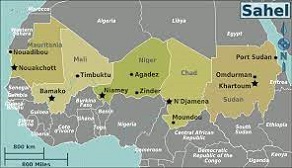In a significant move to address the triple COVID, conflict and climate crisis in the Sahel, the International Fund for Agricultural Development (IFAD) has established a Multi-Donor Funding Facility (MDFF).
The Facility will channel funding to the existing Joint Sahel Program in Response to the Challenges of COVID-19, Conflict and Climate Change (SD3C), according to IFAD. The SD3C focuses on supporting small-scale farmers in the Sahel to adapt to climate change while also increasing food production and improving livelihood opportunities and social cohesion in rural communities.
The $100 million facility will pave the way for expansion of SD3C activities in the target countries and potentially scale to new ones, serving as IFAD’s main programmatic initiative and investment vehicle across the Sahel. The MDFF is open to both IFAD Member States and others, such as bilateral and multilateral donors, philanthropic foundations, and the private sector.
“The SD3C Program has established good practice as an innovative solution for enhanced donor cooperation in fragile contexts. The new funding facility will bring efficiencies and cost savings in line with experience from similar facilities established and managed to date. It will also ensure that actions that are better taken at regional level because they address cross-border issues are adequately funded” said Norman Messer, IFAD Regional Manager of the SD3C.
Approved in 2021, the six-year SD3C program with a total cost of $180,400,000 was designed in 2020 at the request of five countries in the Sahel (Burkina Faso, Chad, Mali, Mauritania, and Niger) and Senegal. It aims to address the triple crises of climate change, COVID and conflict in the region. This unique, joint implementation approach by FAO, IFAD, and WFP (known as the Rome-based agencies or RBAs), with implementation roles for regional producer organizations has shown great potential, aiming to reach 854,750 rural people.
After two years of implementation, SD3C has been reaching some of the most vulnerable population groups, such as internally displaced people, and households that are chronically food insecure. They have benefitted from the distribution of inputs, such as small livestock, improved seeds and market garden equipment, or assets or cash in exchange for labour to rehabilitate degraded soils, accompanied by capacity-building activities. Additionally, most participating countries have launched activities supporting economic integration, such as marketplace infrastructure and information systems, storage, and processing facilities.
The MDFF will promote knowledge management and sharing lessons for enhanced longer-term impact, especially for youth and women. Efforts include strengthening synergies among countries in the Sahel, through the facilitation of exchanges of technical expertise, and innovative solutions and knowledge, contributing to the overall goal of achieving the 2030 Agenda and the Sustainable Development Goals, with a particular focus on SDG 1 (No Poverty), SDG 2 (Zero Hunger) and SDG 17 (Partnerships for the Goals).
The ambition of putting in place the MDFF is that of making a significant contribution to tackle one of the root causes of youth out-migration, food insecurity, conflicts, and insecurity in many rural areas of the Sahel, namely, the lack of sufficient invest aimed at creating economic opportunities locally.

